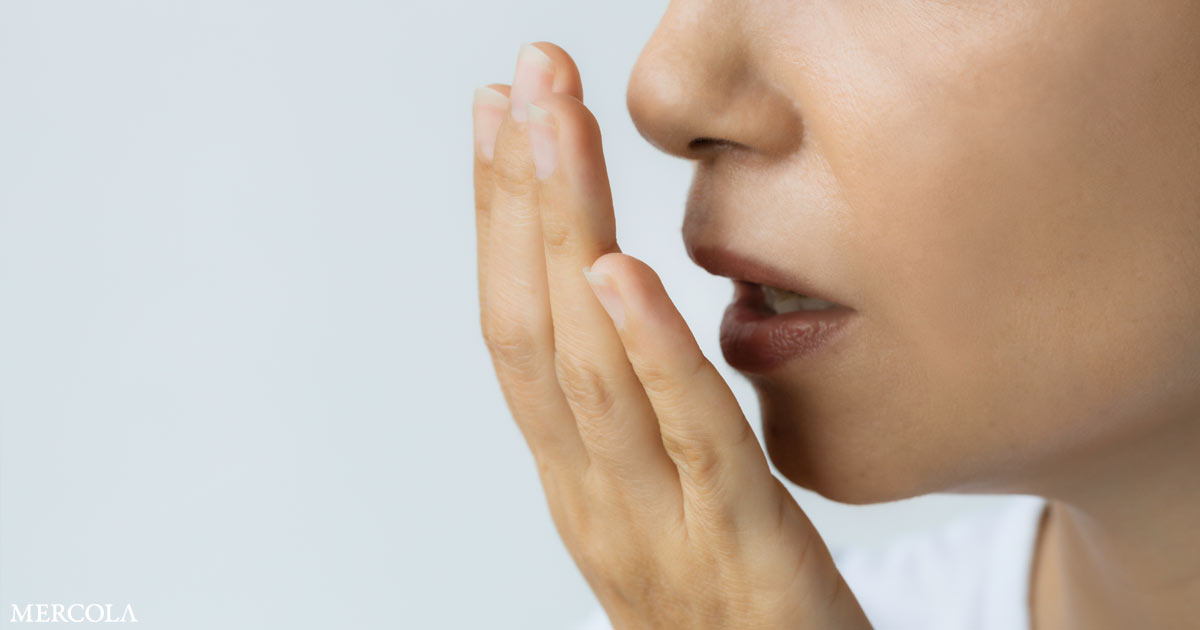
[ad_1]
By this point, the pandemic saga has introduced us to a cast of recurring characters. Among them are the Chill Friend, who is totally over COVID precautions at this point, and the Unlucky Acquaintance, who has had COVID three times and brings it up whenever someone else falls sick. And then there is the Person Whose Roommate Has COVID. You know the type: They’ll describe, in the hushed tones usually reserved for tragic gossip, how and when their live-in friend, partner, child, or whoever came down with the virus—before interjecting, “But I feel fine! … For now.” Nervous laughter ensues. Whether their house is dealing with a blazing-fever situation or a mild-cough one, Person Whose Roommate Has COVID always has the same underlying worry: Am I next?
The answer can feel like a definitive yes. The perfect conditions to catch the coronavirus might look something like a shared home, where families, friends, or near strangers end up spending lots of time together in confined spaces. Even if they’re not sleeping in the same bedroom, roommates in all their various forms are sitting down at the dinner table together or squeezing past one another on the way to the bathroom—potentially misting the virus into the air in the process. And it doesn’t help that the latest variant, BA.5, is the most contagious yet. If Person Whose Roommate Has COVID has been breathing the same air all this time, is there even a point to quarantining? It can be tempting to throw up your hands, assume that a positive test result is coming, and cozy up on the couch for an extended Netflix marathon.
But while the attitude of Person Whose Roommate Has COVID is natural, it’s also misplaced. All members of a household will not inevitably get COVID if someone falls sick—not even close. One recent roundup of 135 studies found that the overall spread of disease within a home—an epidemiological phenomenon that is unfortunately named “household secondary attack rate”—was 42.7 percent for the earliest forms of Omicron. The offshoots we’ve seen since then are more transmissible, so the chance of getting the virus from a roommate is now probably closer to 50 percent, Bob Wachter, the chair of UC San Francisco’s department of medicine, told me. “It’s about a coin flip,” he said. “The key thing is that it’s certainly not a sure thing.” That is especially useful to keep in mind now that the CDC has updated its COVID guidelines, no longer suggesting that Americans who have been exposed to the virus need to quarantine for five days. It was already happening, but now even more People Whose Roommate Has COVID won’t be taking precautions. Still, the new policy doesn’t change what we know about COVID in the home. Separating yourself from the sick person is tedious and sometimes impossible, but if you can, it’s worth the hassle.
The explanation for why people aren’t destined to get COVID from their roommates “is a complex brew,” Wachter said. He and other experts I spoke with agreed on its main components: the infectiousness of the sick person (the “index case”), the immunity of the other people in the household, the virus itself, and the nature of the home.
Unfortunately, there’s no good way of nailing down just how infectious someone is. Infectiousness varies over time, and a positive test isn’t necessarily a sign that an infection is just beginning—especially these days, when people who are symptomatic can still sometimes get a series of negative rapid-test results. If your roommate comes down with symptoms and gets a positive test result soon after, there is little doubt that person is contagious at that moment. But whether they were infectious prior to the test is not a given. “I wouldn’t assume that just because your loved one was sick for a day or two [before testing] that you were exposed to a contagious person during that time. It’s unknown,” Jennifer Nuzzo, an epidemiologist at Brown University’s School of Public Health, told me. COVID symptoms usually but don’t necessarily equal contagiousness, she explained; confusingly, a vaccinated person may develop symptoms before testing positive on a rapid antigen test because their immune system, primed by the vaccine, is merely reacting to the virus. If you live with that person, “it could give you a glimmer of hope that you could still not get infected, were you to take additional precautions,” Nuzzo said.
And like so many other aspects of COVID, an infected person’s ability to spread the virus also greatly depends on their vaccination status. Remember that the coronavirus is not all or nothing; it builds up in the body incrementally until it spills over and out to other people. In other words, contagiousness hinges on viral load, which may vary with the strength of someone’s immune response. Compared with someone who is unvaccinated, an infected person who is up to date on their shots has a better chance at keeping the viral load down, meaning they are poised to shed less virus to other members of the household.
The vaccination status of other people in the home is “perhaps even more important” than that of the index case, Jodie Guest, a professor at Emory University’s Rollins School of Public Health, told me. Even with the newest variants, vaccines still provide some protection against infection (and even better protection against severe illness and death). In the big analysis of studies, the variant with the highest household-secondary-attack rate was Omicron, but the next-highest was not the second-most-transmissible variant, Delta. Instead it was Alpha, the first major coronavirus variant, which emerged at the end of 2020—before vaccines were widely available in the United States. “That’s solid evidence that the vaccines definitely are preventing a skyrocketing [household] secondary-attack rate,” Guest said. Of course, the protection imparted by vaccination fluctuates with numerous factors: the timing of vaccines and boosters, previous infection with old or new variants, and genetic susceptibility, among others. All other factors being equal, a home made up entirely of unvaccinated people would be expected to have a higher household-attack rate than a home of all boosted people.
Then there is the virus itself. It’s frustratingly good at infecting us humans—a major reason this pandemic has dragged on and on—but it’s still not contagious enough to infect everyone in a household in every single case. “There is some inefficiency in transmission,” Amesh Adalja, an infectious-disease physician at Johns Hopkins University, told me. “It’s clearly not in the same league as measles,” an airborne pathogen that has a household-secondary-attack rate of more than 90 percent. And although Omicron may have qualities that contribute to its high transmissibility—such as a potentially shorter incubation period and larger viral load—those alone might not be enough to fully explain its higher attack rate, Nuzzo said. It’s possible, even likely, that the more important factor is waning immunity, she explained; just about a third of Americans have gotten their first booster shot.
The factor that is perhaps the most challenging to deal with is the nature of the household itself. Unlike getting vaccinated or putting on a mask, most people cannot change their living situation the moment a double bar materializes on a rapid test. If you live in a mansion, well, congrats. It is much easier to stay distanced and avoid getting sick in a big house with several bedrooms and a backyard. Less so for poorer people who might live in a cramped apartment with a single shared bathroom. Research suggests that poor immigrant neighborhoods—the Bronx, in New York, and Pico Union, in Los Angeles—were among the hardest hit in the pandemic because homes in these areas are disproportionately overcrowded. In multigenerational homes with young children or elderly people who need care, fully isolating is almost impossible. “These are all things that are incredibly variable and specific to people’s situations,” Guest said, “and are going to be inequitably distributed.”
This complex brew has an invisible, maddeningly uncontrollable secret ingredient: luck. Sometimes, a person who is fully vaccinated and boosted falls sick, while a less diligent person dodges infection over and over again. “This is the hardest piece,” Wachter said. “It’s very hard to predict.” Despite our best efforts to protect ourselves and others, COVID can still break through, seemingly at random. So many factors influence susceptibility that accounting for all of them at once is nearly impossible.
Taking all the factors into account, that Person Whose Roommate Has COVID faces baseline 50–50 odds of getting sick is nothing to celebrate. Lots of people in this situation end up falling sick themselves. But it is a reminder that nothing about this virus is preordained. A household can tilt its chances in a favorable direction by doing all the usual, proven things: wearing good masks, opening windows to increase ventilation (and buying a HEPA filter if you can afford one), separating from the sick person when possible, and testing often. If you have no choice but to share a bed with someone who is sick, the CDC recommends sleeping head to toe. Vulnerable people, especially those 65 and over, should have a plan for getting Paxlovid, and everyone should stay up to date on vaccinations and boosters, Nuzzo said. “There’s no point in waiting for a different vaccine in the fall if you get it between now and the fall,” she said. These sorts of measures are really worth the trouble: The problem with not trying is that it can lead to more infections at home, “and then you’ve got a whole other mess,” Adalja said. “Why prolong it?”
There is no way around this: Managing COVID in a household is cumbersome, and it will be far easier for people who have more resources. Some will be able to follow every expert recommendation to the letter; others will have to be more selective. Parents of a sick child may choose not to separate—not because they don’t care about getting infected, but because the risk of doing so is outweighed by the need to care for their child. “Those are fair, emotional, familial conversations,” Nuzzo said. “Some people want permission to not try to stay aseptically isolated from their loved one, and I completely understand why they may want to do that.”
Now that the latest CDC guidance puts COVID safety into the hands of Americans—well, even more than it already was—Person Whose Roommate Has COVID has yet another reason not to quarantine. The hope is that they aren’t infectious. However, there’s always a risk that they may be, and the best way for them to keep protecting others is to remain as cautious as possible at home. The coronavirus is known to spread more easily in households than anywhere else, so doing one’s best to separate from a sick person at home can go a long way in preventing the virus from making the leap from your house to the world outside. Especially heading into the fall and winter, when case numbers are expected to jump even higher, trying to tamp down on household transmission is a small thing we can all do to attempt to keep this virus under control. No matter what, we will continue to meet People Whose Roommate Has COVID, but we can help them avoid becoming People Who Have COVID Too.
[ad_2]
Source link





No comment yet, add your voice below!